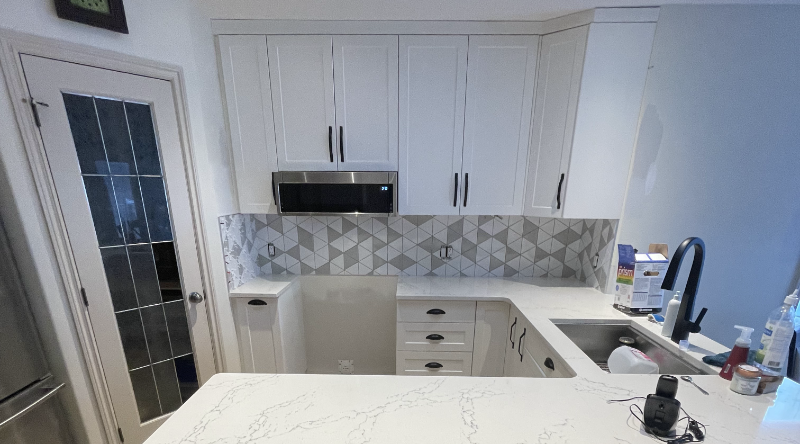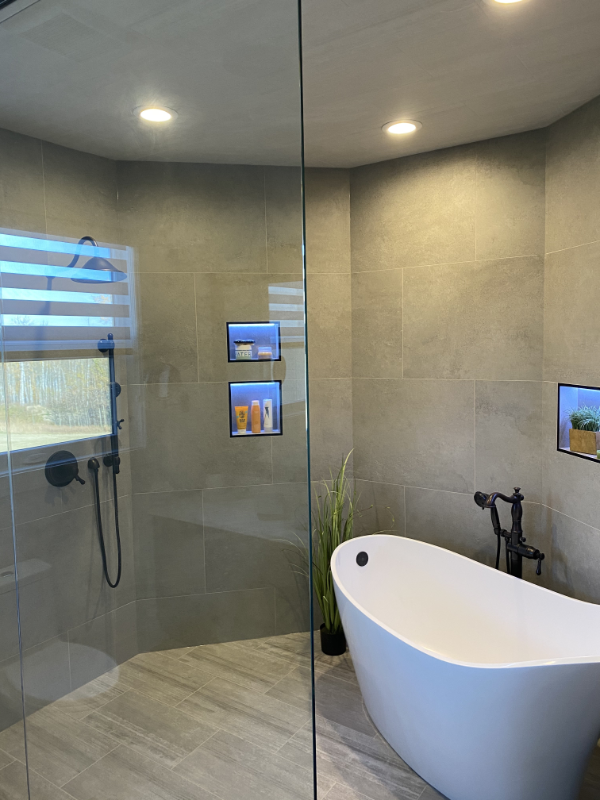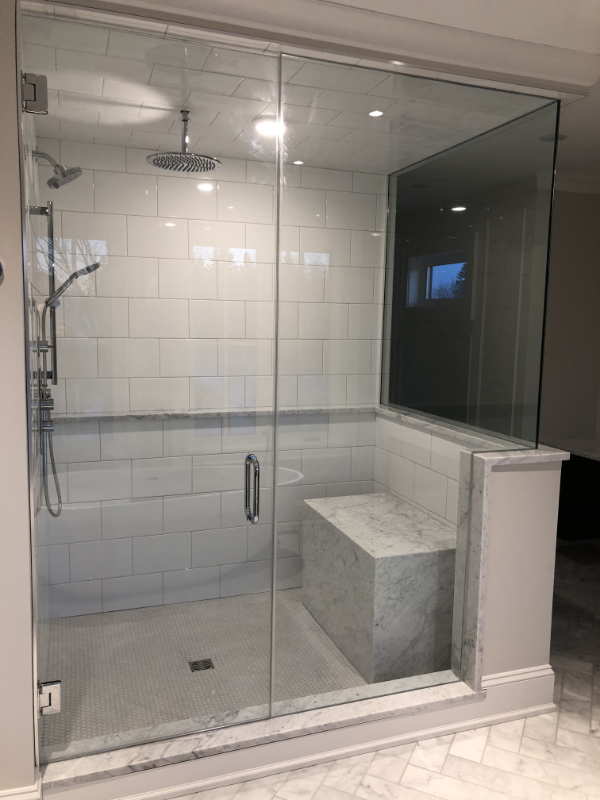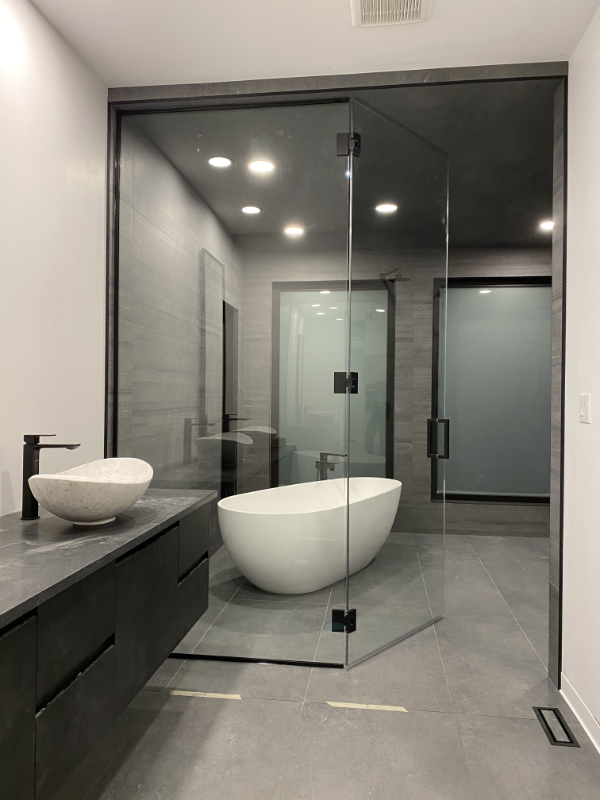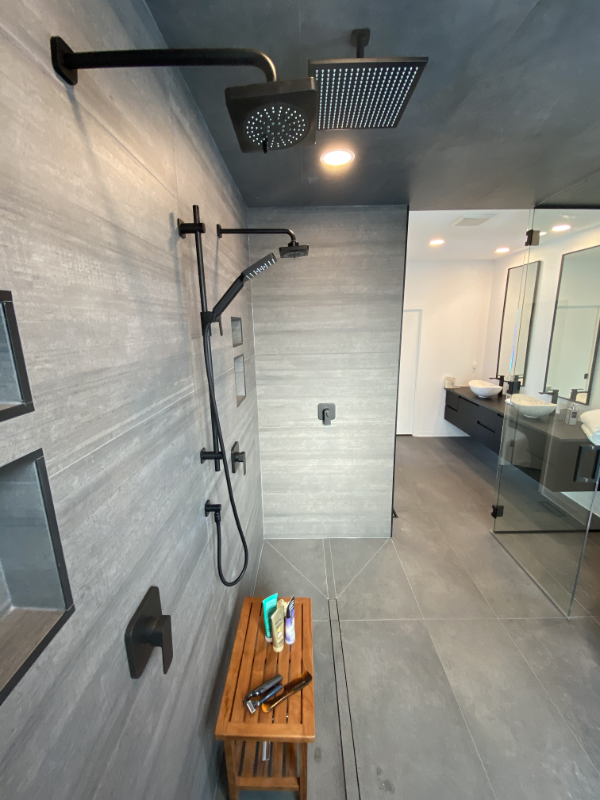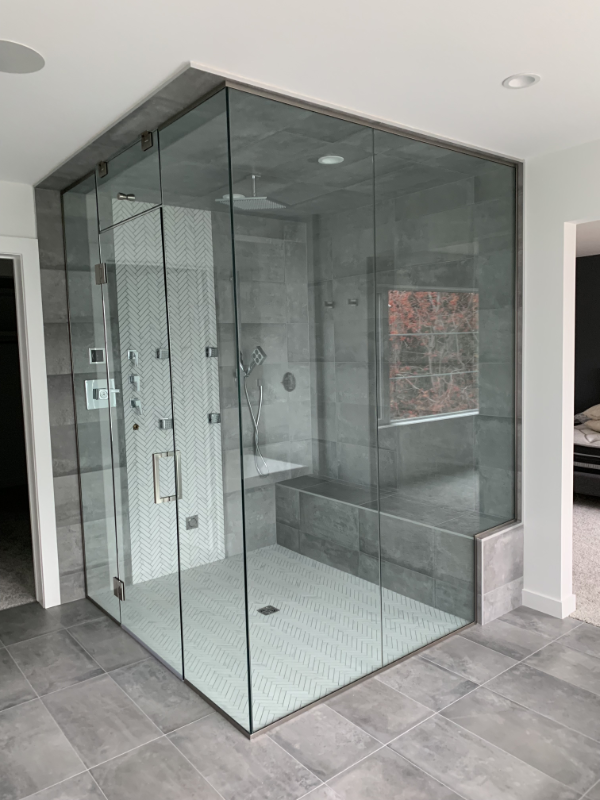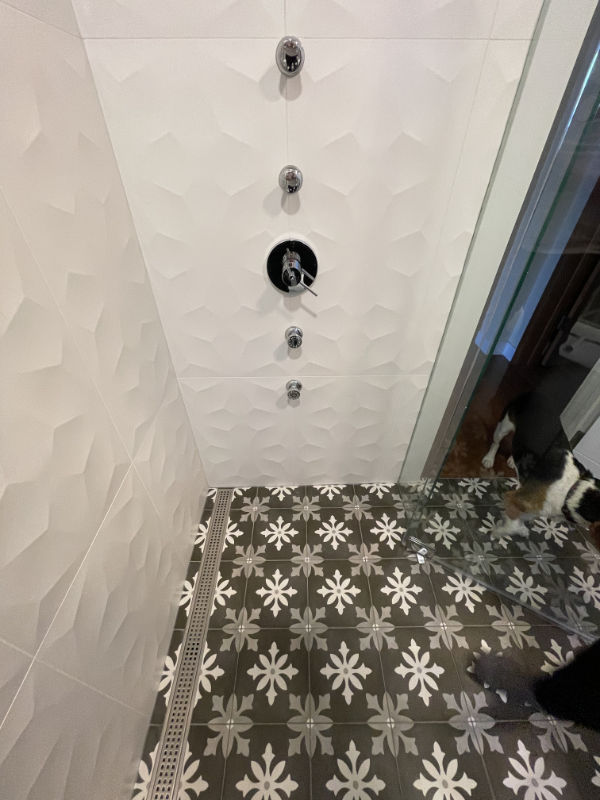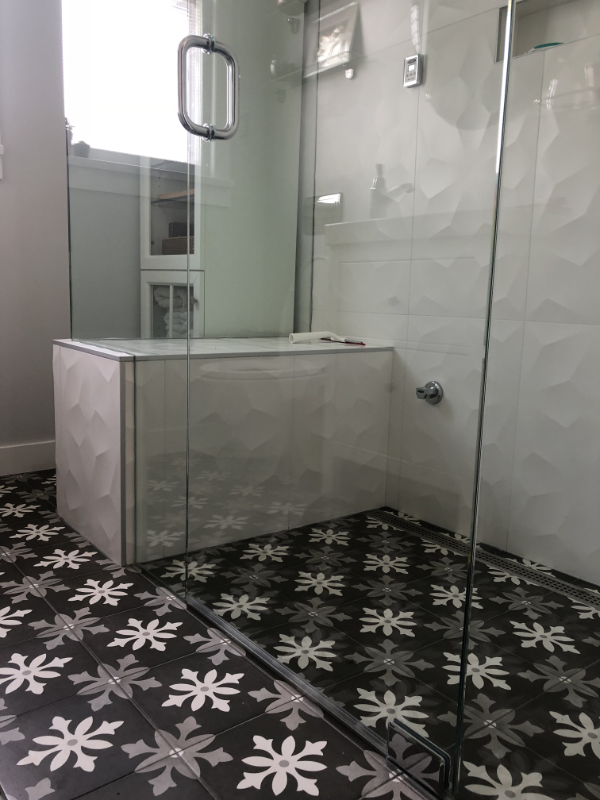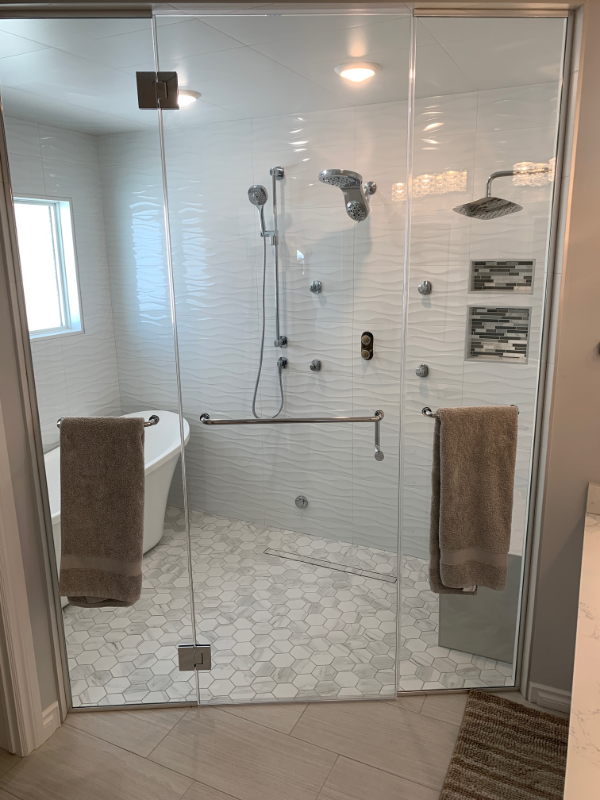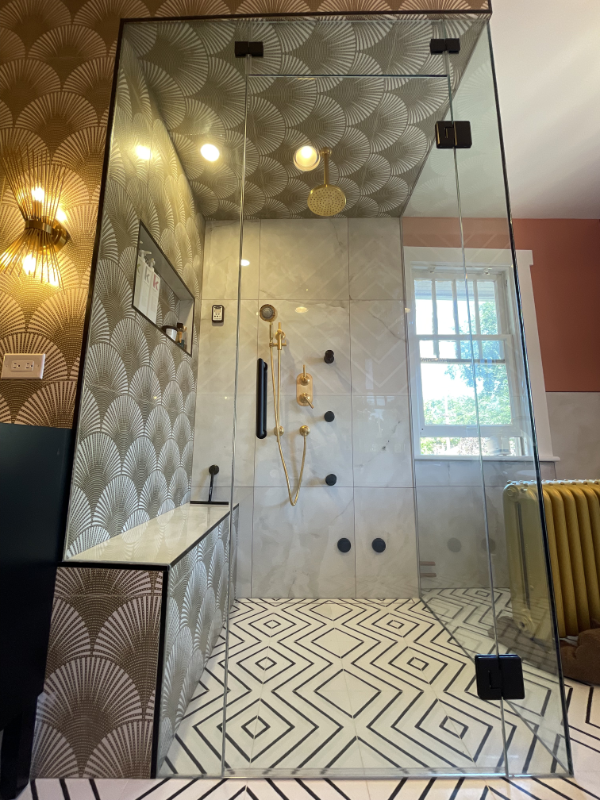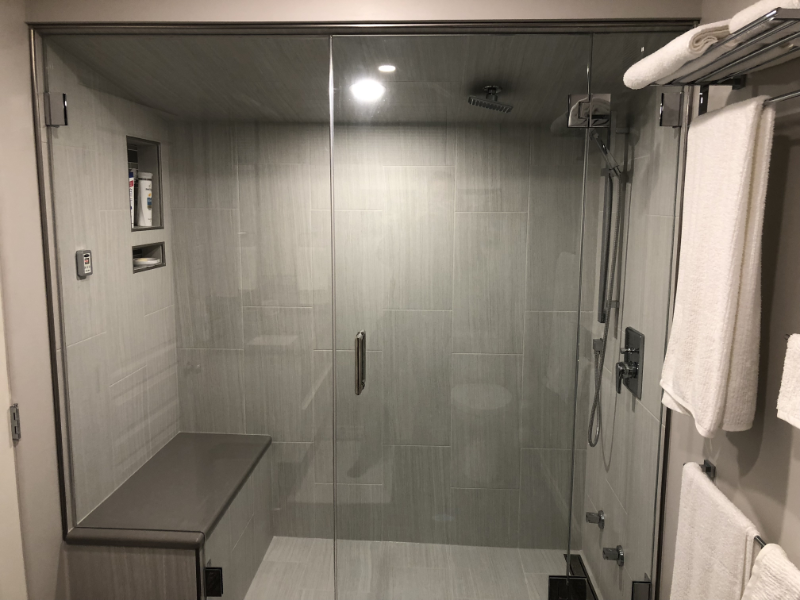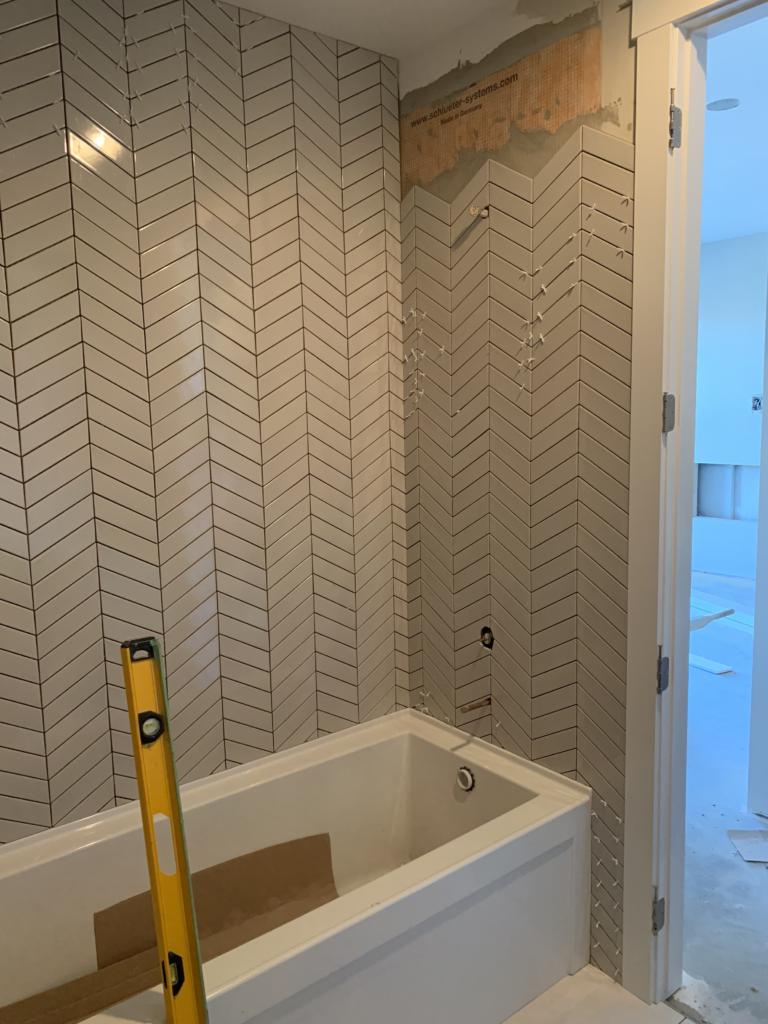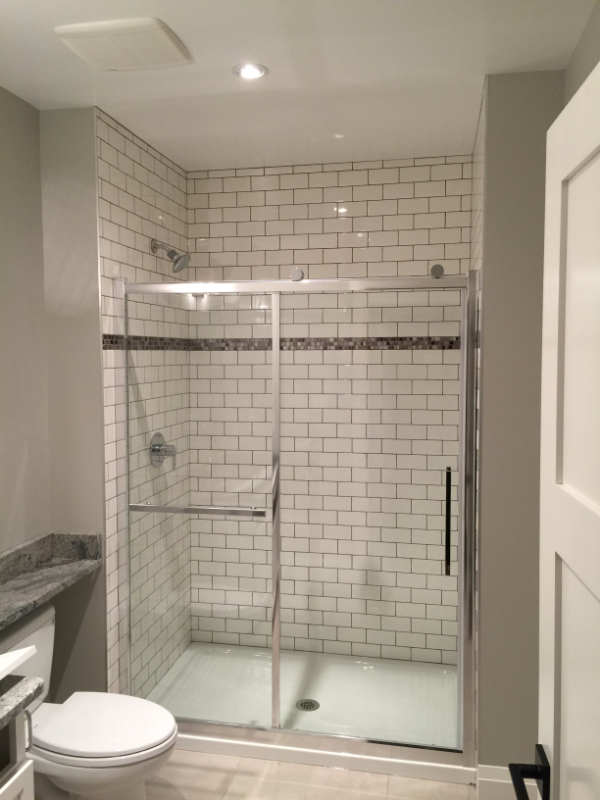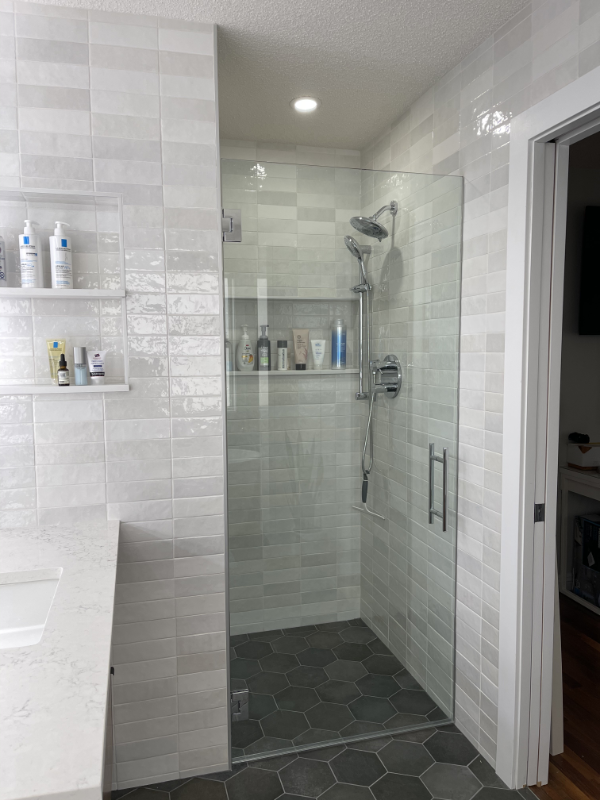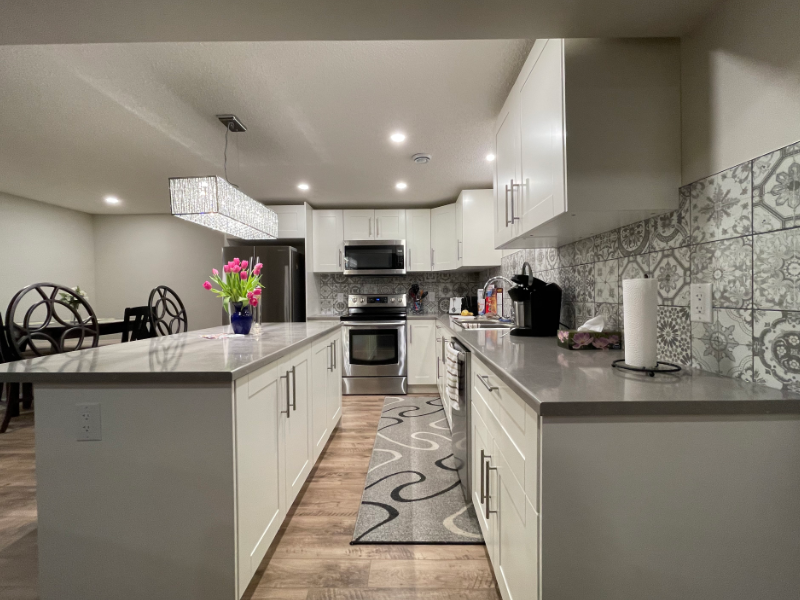
Introduction: DIY Tile Installation
DIY Tile Installation; should I do it? At The Tile Installations Specialists we like to create a sense of awe in everything we do and part of that is transforming spaces with the art of tile craftsmanship. Whether it’s a sleek subway tile for your backsplash or a durable 12×24 porcelain for your entrance, the right tile can elevate your home. But the question we often encounter is: Should you attempt tile-setting on your own? Let’s explore this together.
Table of Content
Know your project
Firstly, understanding the scope of your tiling project is crucial. A small backsplash area in your kitchen? Perhaps a manageable undertaking…. maybe… depending on the tile you choose. However, flooring an entire room or a complex pattern may require precision and expertise beyond casual DIY skills. Here is a blueprint for a major bathroom reno to help you on large projects. Consider the size, location, and purpose of the tiled area. These factors can influence the complexity of the job and the materials needed.



Tools & Materials
DIY tile-setting requires specific tools and materials such as tile cutters, trowels, spacers, mortar, and grout. At TTIS, we utilize professional-grade equipment for precision and longevity. Inadequate tools can lead to uneven cuts, poor adhesion, and ultimately, a less durable finish. For those without these tools, the initial investment can increase the overall cost and complexity of the project.
Skills & Experience
Tiling is an art form. It requires a steady hand, an eye for detail, and experience. As professionals, we’ve spent years perfecting our craft, from understanding how to properly lay out a room to mastering the intricacies of how tile behaves in different conditions (exterior, interior, hot, steam showers, humid areas, enclosed areas). While some homeowners may have a knack for precision work, the experience gap can be a deciding factor in whether a DIY project will have a professional-quality finish.

Time Commitment
Consider the time you’re willing to dedicate to the project. Professional tilers like ourselves can tackle a job efficiently, thanks to our experience and focus. A weekend project for a DIYer can quickly turn into a multi-weekend saga with disruptions to your daily life and potentially unsatisfactory results if rushed.
Cost-Benefit Analysis
Cost is often a motivator for DIY, but it’s important to do a thorough cost-benefit analysis. The hidden costs of DIY include tool rental or purchase, material waste due to inexperience, and the potential need for future repairs. Conversely, hiring professionals like TTIS ensures the job is done right the first time, with workmanship guaranteed and even better we warranty all of our installations for as long as you own your home.


When to hire a pro
So, when should you definitely call in a pro? Jobs that demand waterproofing expertise, such as showers and outdoor tiles, large areas, and complex patterns or materials, are best handled by professionals. Not only for the sake of quality but for ensuring the longevity of your investment. Imperfect tiling can lead to water damage, loose tiles, and costly repairs down the line.



FAQ
Q: Do you know how many inches of subfloor is required by code in Edmonton for a tiled system on your floors? A: A minimum of 1 1/4″ is required
Q: Do you know how to plan a layout? Small cuts on the edges is not acceptable. Watch for “U” cuts in certain sections because it isn’t always possible. Also for “L” cuts. Symmetry is a must. What are you willing to live with for the next 20-30 years of your life? A: If the answer is yes. Check pattern both ways. Check size tile (12×12 or 12×24 or hexagonal 8×9), pattern install (70×30, stacked, side to side or front to back), Grout size line, and measure the pattern on repeat until edge of area. Spend the extra time here to avoid problems after you’ve place tile with mortar and its drying.
Q: Are you going to be renting the tools? Buying the tools? A: Unless you’re planning on becoming a tilesetter after you finish your project, this will increase the cost of the project a lot and then tools will collect dust in storage.
Q: Do you know what mortar to use depending on the location of the tile application? Different size tiles require different mortars. A: This is pretty self explanatory. Depending on size of tile and location of application there are mortars to make your life easier and also a best project outcome.
Q: Application on different substrates? What do you do if you’re going on top of linoleum? Particle board? Top of tile? A: Mortar has moisture and particle board likes moisture. You do not want to install on particle board. Remove and install appropriate substrate prior to tile install. Do not install on top of linoleum, unless proper testing and priming of the substrate is done first.
Q: What material to use in a shower application? Drywall? Mold resistant drywall? Tile backboard? Cement board? A: As long as there is a waterproofing membrane installed after the boarding of the shower, you are 100% good. You could save money if you just use a waterproofing board and then just apply sealer on the joints.
Q: Are you confidently willing to put thousands of dollars in tile and material on the line to potentially save some money? And your own valuable time? A: It is up to each one of you.
Q: Have you ever had a quick and easy weekend DIY project turn into a month long nightmare? I know we have a fair share of our own. It can be really stressful on a marriage. A: How much do you value your time? How much do you value your marriage? These are really important before you jump into a DIY tile setting project.
Q: Why is tile installation so expensive? A: Tile installation extends far beyond the simple act of laying tiles. It involves a thorough and detailed process in which the tilesetter meticulously covers the designated area a minimum of seven times from start to finish, ensuring that the installation meets the highest standards of quality. This degree of scrutiny is a bare minimum and does not even take into account the added complexity when opting for intricate designs like chevron, herringbone, or complex multi-size tile patterns. Moreover, it’s important to recognize that tile laying is not just a task but an art form that demands specialized skills, precision, and a keen eye for detail. The process is elaborate and demands significant time investment, with a focus not only on ensuring the structural integrity of the installation but also on achieving a level of aesthetic excellence that complements the overall design vision. Rest assured, our commitment to these principles ensures that your tile installation will not only last but will also be a visual delight.
Conclusion: DIY Tile Installation
To sum up, DIY tile-setting can be a rewarding project for those with the time, tools, and modest ambition. However, the assurance of quality, efficiency, and expertise often makes the investment in professional services worthwhile, particularly in complex projects or high-stake areas of your home. At TTIS, we believe in doing it right while delivering beautiful, lasting results. You can find us on Facebook, Instagram, TikTok, and Youtube. Our website is full of resources for all of the DIY folks out there because we do want you to attempt it. BUT Remember… just because you can doesn’t mean you should.














